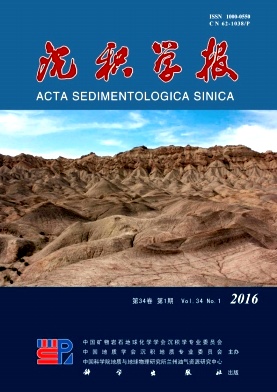Stratigraphic Structure and Sedimentary Evolution during Late Quaternary in Lubei Plain
doi: 10.14027/j.cnki.cjxb.2016.01.008
- Received Date: 2015-03-16
- Rev Recd Date: 2015-05-08
- Publish Date: 2016-02-10
-
Key words:
- Lubei plain /
- Late Pleistocene /
- stratigraphic structure /
- sedimentary evolution
Abstract: Based on 54 new drilled holes in shallow layer and a plurality of outcrops, combined with grain size of sediments, thin sections, microfossils, plant pollen, 14C dating, and static cone penetration test, stratigraphic structures and sedimentary types during late Quaternary in Lubei Plain was studied, and sedimentary evolution after terminal late Pleistocene was summarized. The results showed that, from pleniglacial of the last glacial period to the post glacial period, sea transgression and regression and channel migration of the Yellow River affected by topography and climate change were the main factors influencing shallow stratigraphic structures and sedimentary characters. Differences between the southern and northern stratum structure were obviously. Paleochannels, lakes and marshes, loess, deltas, tidal flats, and littoral-neritic sea developed. The distribution area of paleochannels was largest among them, which were divided into three layers. From terminal late Pleistocene to the early stage of early Holocene, influenced by the dry and cold climate, the first period paleochannels developed, and loess deposited to the south of Xiaoqing River. From the late stage of early Holocene to the middle Holocene, transgression layer and deltas developed in the coastal area, while lakes and marshes and the second period paleochannels developed successively in the inland area. After the last stage of middle Holocene or the late Holocene, influenced by flood of Yellow River, the third period paleochannels and the modern Yellow River delta deposited. The studies of stratigraphic structures and sediments distribution have important guide significance to the analysis on the changes of underground water level and selecting the appropriate seismic excitation layer.
| Citation: | WANG HaiFeng, YANG JianPing, PANG XiaoLin, CHEN Fei, LIANG Xu, JIA JunTao. Stratigraphic Structure and Sedimentary Evolution during Late Quaternary in Lubei Plain[J]. Acta Sedimentologica Sinica, 2016, 34(1): 90-101. doi: 10.14027/j.cnki.cjxb.2016.01.008 |






 DownLoad:
DownLoad: